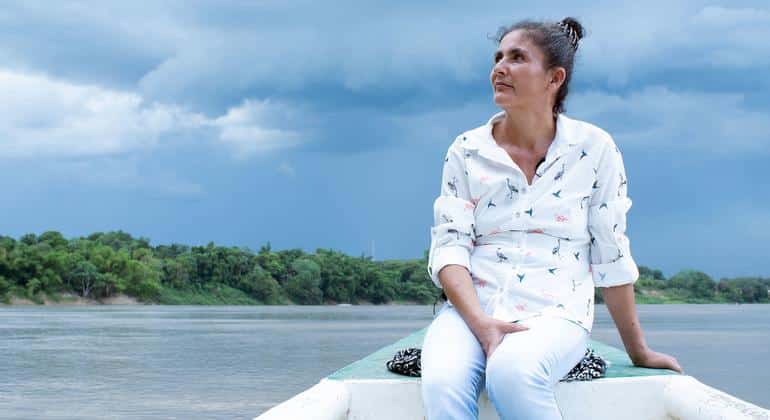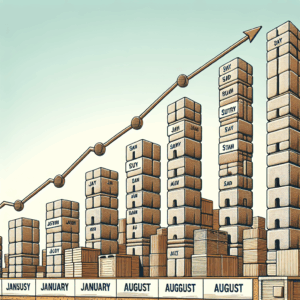In the heart of the Colombian Amazon biome, Sandra Donado navigates the Guaviare River, whose currents reflect the traces of a tumultuous past. “What do I want the river to carry away? Deforestation,” she expresses, as drops from a sudden storm fall on her canoe. The waters have witnessed the evolution of the municipality of Mapiripán, which has gone from being a center of wildlife trafficking to an epicenter of coca cultivation, marking its history with pain and loss.
The community of Mapiripán has faced an endless cycle of conflict and environmental deterioration. Once famous for its illegal fur trade, the municipality became a battlefield due to the arrival of armed groups, leading to the devastation of its natural environment. Sandra, drawn by the promise of prosperity in the 2000s, recalls how many were caught in the false boom of drug trafficking. “There was an economic boom,” she states, “but it was due to illicit crops; there was no other way to survive.”
Years after the signing of the Peace Agreement in 2016, the return to a normal life presented a challenge. The conflict-marked lands were worn out and could barely sustain their inhabitants. Nonetheless, some, like Marco Tulio López, were forced to turn to livestock, which implied more deforestation. “We deforested 15 or 20 hectares with our own hands for the cattle,” he recounts, emphasizing that they did it not out of disdain for biodiversity, but out of necessity.
Things became more complicated when new settlers arrived in the region, ravaging lands on an alarming scale. “They entered the center, the eye of the mountain, without any respect for the water basins,” denounces Sandra, concerned about the evident climate consequences. “That was when we started feeling the heat and noticing the change in climate.”
However, the community has begun to see signs of hope. With the implementation of GCF-Amazon Vision, a project supported by FAO, inhabitants are learning to balance agricultural production and environmental conservation. Agroforestry practices that integrate agriculture with forestry are being promoted, which not only combats deforestation but also improves the quality of life for residents.
Sandra Vanegas, an FAO market technician, explains that this approach helps families generate income through associative projects while ensuring forest conservation. “We are promoting agroforestry gardens where they can produce food for their own consumption,” she indicates. Marco, on his part, expresses his enthusiasm for the new sustainable livestock strategies they have learned. “Before, we didn’t know we didn’t need a large expanse of pastures for our cows to have good nutrition.”
The training has empowered community leaders, who now advocate for forest protection through the AGROSIARE association. An ambitious goal is to plant and commercialize the Cacay tree, a native species known for its nutritious fruit. With the momentum of these trainings, the community is determined to ensure the sustainability of its environment.
In a context of climate crisis, the GCF-Amazon Vision initiative inspires many to believe that a future where nature and the community thrive together is possible. “If the forest thrives, and we thrive, the animals will thrive too,” Sandra summarizes, emphasizing the inseparable link between human well-being and the planet’s health.
Source: MiMub in Spanish











